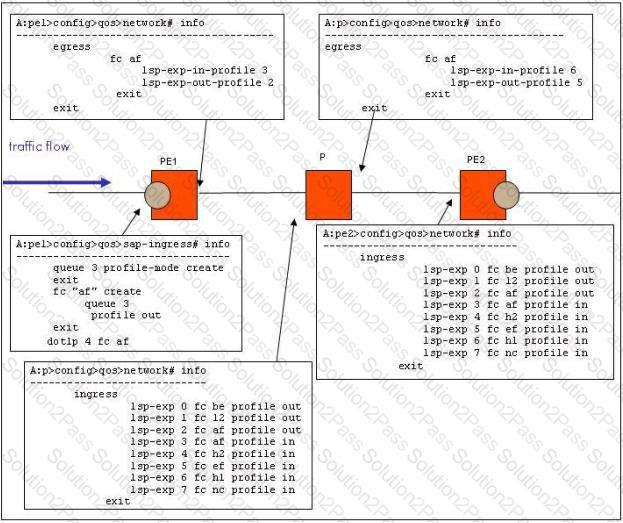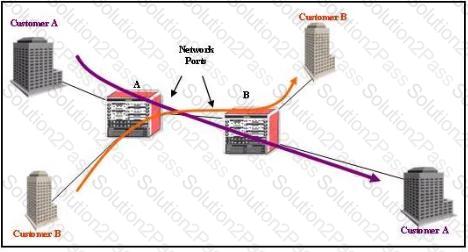4A0-107 Nokia Quality of Service Free Practice Exam Questions (2025 Updated)
Prepare effectively for your Nokia 4A0-107 Nokia Quality of Service certification with our extensive collection of free, high-quality practice questions. Each question is designed to mirror the actual exam format and objectives, complete with comprehensive answers and detailed explanations. Our materials are regularly updated for 2025, ensuring you have the most current resources to build confidence and succeed on your first attempt.
When deploying an Nokia MPLS network with QoS, how are the EXP bits set?
Click the exhibit button below. Traffic arriving at router PE 1 is marked with a dot1p value of 4. Given the network policies applied on the routers in the diagram below, what is the EXP value of packets arriving at router PE 2?

Note: Only relevant portions of the network policy are shown.
In which policies, on the Nokia 7750 SR. is classification performed? (Choose three)
Which of the following fields is in the MPLS header?
Forwarding sub-classes are configured in the context of which QoS policy type?
Click the exhibit button below. Each router is interconnected by a single GigE link, as shown in the diagram below.

Note: The arrows show the direction of traffic flow.
Traffic from Customer A and Customer B that is classified to the same forwarding class is queued together at the ingress of Router B.
Which of the following QoS functions does the slope policy perform?
Which of the following statements about port schedulers is TRUE?

In the diagram shown above, applying policing and soft-policing on access ingress is typical for which of the following types of traffic?
Which of the following statements about burst-limit of a queue is FALSE?
How many queues are available for use on service egress within a VPLS service?
Which action should be taken to ensure that packets do not use the shared buffer space when put into a queue?
Which of the statements about packet classification is TRUE?
If a packet is marked on a SAP-ingress, it will be remarked at the first network egress point (if remarking is enabled in the network egress policy).
How many tiers of schedulers can be supported in hierarchical scheduling on the Nokia 7750 SR?
If traffic is destined to queue 5, which has a high-priority-only value of 0 in the network-queue policy, all out-of-profile packets will be dropped.
Which of the following statements regarding buffer pool allocation are FALSE? (Choose two)
Which of the following statements about behavior aggregate classification is TRUE?
If packets egressing a SAP do not match any criteria defined in the SAP-egress policy, which forwarding class will these packets be assigned to?
An egress port scheduler applied to an Ethernet port has a configured bandwidth of 100 Mbps. All frames transmitted on the port are 80 bytes. What is the aggregate transmit bandwidth of all queues using the port scheduler?
